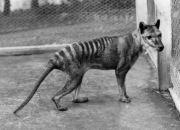Here’s another concise Conservation Classic highlighted in our upcoming book chapter (see previous entries on this book). Today’s entry comes from a colleague of mine, Dick Frankham, who has literally written the book on conservation genetics. I’ve published with Dick a few times – absolutely lovely chap who really knows his field more than almost any other. It is a great pleasure to include one of his seminal works as a Conservation Classic.
This entry is highly related to our work on minimum viable population size, and the controversial SAFE index (more on that later).
–

He assessed the effects of fluctuating population size, variance in family size and uneven sex ratios from 102 species. He found that the Ne:N ratio averaged only 10 % in wild populations, signalling that even apparently large and ‘secure’ populations might, in reality, already be suffering from inbreeding depression and thereby require genetic management to lower their extinction risk and retain evolutionary potential.
CJA Bradshaw


